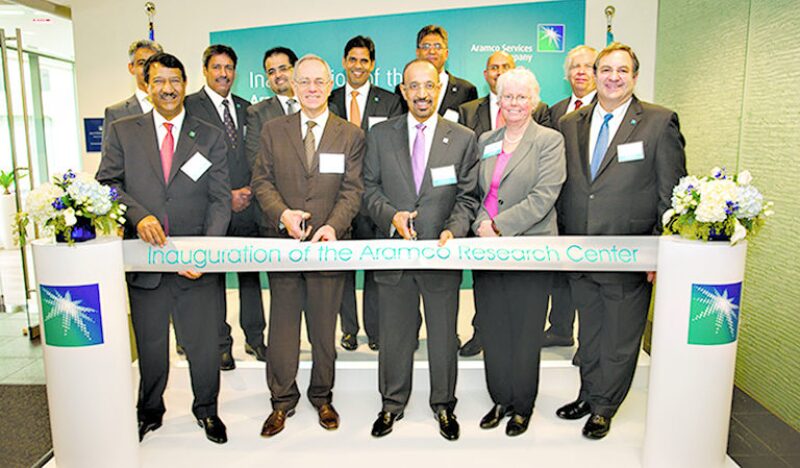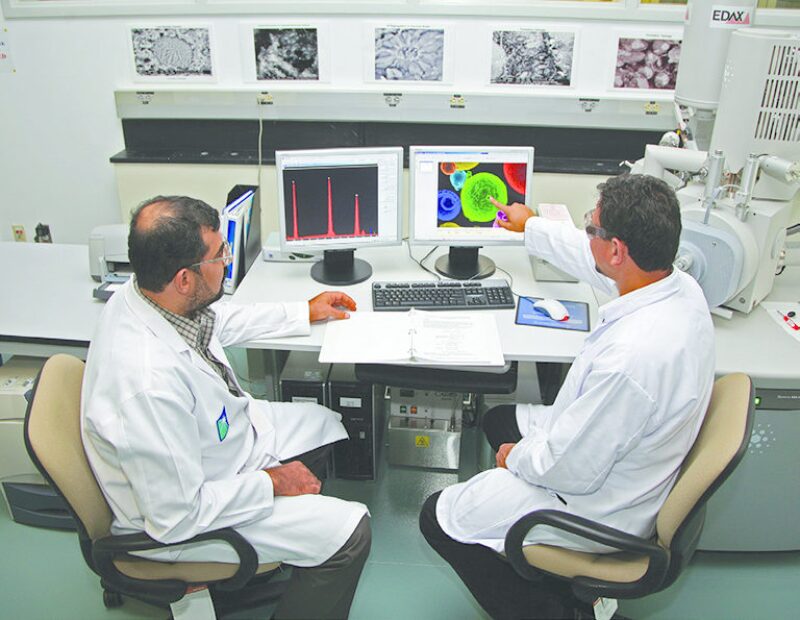Saudi Aramco has launched an ambitious research and development (R&D) program in an attempt to increase the oil recovery factor of major producing reservoirs from the current 50% to 70%.
The company said it is emphasizing high-impact technologies that typically involve long-range strategies. “We are pursuing R&D to bring about breakthrough achievements—not simple or merely incremental enhancements,” said Khaled Al-Buraik, a vice president at Saudi Aramco.
The Exploration and Petroleum Engineering Center Advanced Research Center (Expec ARC), Saudi Aramco’s R&D arm, is currently working on several research projects and field pilot tests involving improved-oil-recovery and enhanced-oil-recovery (EOR) methods to achieve the target recovery rates.
So far, the company’s effort has focused on CO2 EOR and chemical EOR, with a goal to find surfactants and polymers that will tolerate Saudi Arabian reservoirs’ salinity and temperature. The surfactant recovery project aims to develop stable nanoparticles that will deliver solvents on demand deep in the reservoir.
Another area of focus involves smartwater flooding, which addresses the role of ions, at microscopic scale, to increase oil recovery without major investment.
CO2 Research Program
CO2 EOR is a common method applicable to light-oil carbonate and sandstone reservoirs. Expec researchers have conducted several experiments to acquire data for reservoir simulation of CO2 EOR. They have then followed it up with field experiments. “From reservoir simulation, we went to the field and we did some field experiments on a very small scale. The next thing is to do a CO2 EOR pilot,” said an engineer involved in the project.
Goals of the research project include demonstrating CO2 storage through EOR, confirming the volume of CO2 sequestrated, developing and applying innovative monitoring techniques to assess the sequestrated CO2, and assessing the impact on oil recovery.
Saudi Aramco’s research arm is also working with several university research teams on challenges related to gravity segregation. The company has partnered with Heriot-Watt University to conduct a CO2 carbonate water study, which will focus on rock fluid properties, coreflood and micromodel experiments, as well as CO2 gravity segregation and requirement.
Another project, with the University of Bergen in Norway, involves CO2 foam injection. Additional research is looking at injecting nanoparticles in which the CO2 will be coated and dissolved in a water-soluble solution. The project aims to improve CO2 density, conformance control, and gravity override mitigation.
Chemical EOR
Most industry research on chemical EOR has been conducted in reservoirs in which salinity does not exceed 100,000 ppm and temperatures are less than 230°F, but salinity in Saudi Arabia’s reservoirs reach 200,000 ppm and temperatures often exceed 230°F. In addition, previous studies have focused on sandstone reservoirs, while Saudi Aramco mostly deals with carbonate reservoirs, the company said.

The implementation of chemical EOR methods for carbonate reservoirs is challenging because of the complexity of the rock mineral composition, matrix pore structures, rock surface properties, aperture and orientations, and oil type. As it is the case with the CO2 EOR, Expec ARC’s research team started with developing laboratory capabilities and worked closely with chemical manufacturers to identify chemicals that can sustain harsh environmental conditions.
The chemical EOR evaluation re-search project developed and demonstrated surfactant/polymer formulations for high-temperature/high-salinity conditions at laboratory scale, followed by the building of reliable simulation models, and then optimizing the formulations for a planned field pilot project. Saudi Aramco’s research team did a single-well trial test, followed by the drilling of the first chemical EOR pilot in Saudi Arabia.

Smartwater Flooding
The main motivation behind Saudi Aramco’s smartwater EOR method is to capitalize on its large water injection facility. Smartwater flooding is the first homegrown recovery technology that has the potential to provide substantial additional oil recovery through a simple tuning of the ionic composition of the seawater treated at the Qurayyah facility for injecting into producing fields to maintain reservoir pressure.
The team achieved a 70% recovery using waterflooding, and saw an increase of 16% in recovery with the application of the smartwater technology.
The smartwater flood field application included several single-well tracer tests in which the research team injected waterflooding first to mobilize the oil, followed by smartwater injection. The team achieved improved recovery at an average of 9% for a single tracer well.
The team is working on the first field pilot to be conducted in 2015/2016. “The execution of a multiwell field pilot is being planned at North Uthmaniyah,” the company said, “and Saudi Aramco is conducting fundamental in-house research to better understand the fine details of recovery, from the atomic/molecular scale to the reservoir scale.”
Research is still ongoing to address and understand the role of different ions in the injected smart water. “The fundamental research to optimize the role of ions mainly aims to understand and quantify how water ions interact with carbonate rock surfactants at molecular and atomic scale,” said an engineer involved in the project.
Nanoparticles Program
Saudi Aramco’s nanotechnology EOR program is studying three types of particles: active, passive, and reactive ones. The passive particles are tracers that can reveal the interconnectivity of the well. Saudi Aramco is using its own Arab-D Reservoir Dots (A-Dots) technology for the project. The A-Dots program won the Technical Innovation of the Year award for its research and implementation of nanoparticle agents at the annual Oil & Gas Middle East Awards program last year.
The active nanoparticles give an idea about the oil saturation, temperature, and pressure of the pathway the particles took in the reservoir. For this, the team uses the nanomapper and chameleon technologies.
The research team has conducted several tests to ensure that reactive nanoparticles flow to the core. A field trial with a single-well test included an injection of nanoparticles, with a recovery of more than 80% of the particles. Another test involved an inter-well test, in which the particles were injected into one well and surrounding wells were monitored. Researchers have recovered particles from these wells and are still monitoring other wells.
The team is also conducting experiments to study the effect of injecting coated surfactant molecules. The aim is to minimize the absorption of the pure surfactant injected and to see if the coated surfactant can propagate better through the reservoirs.

